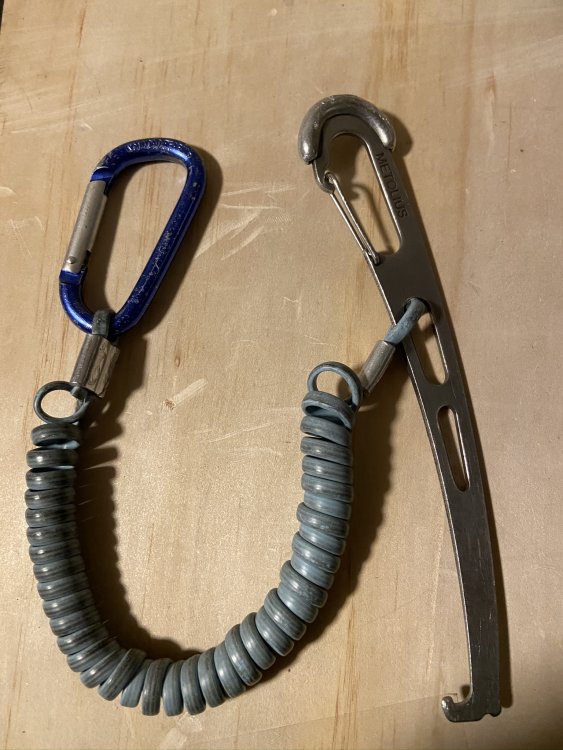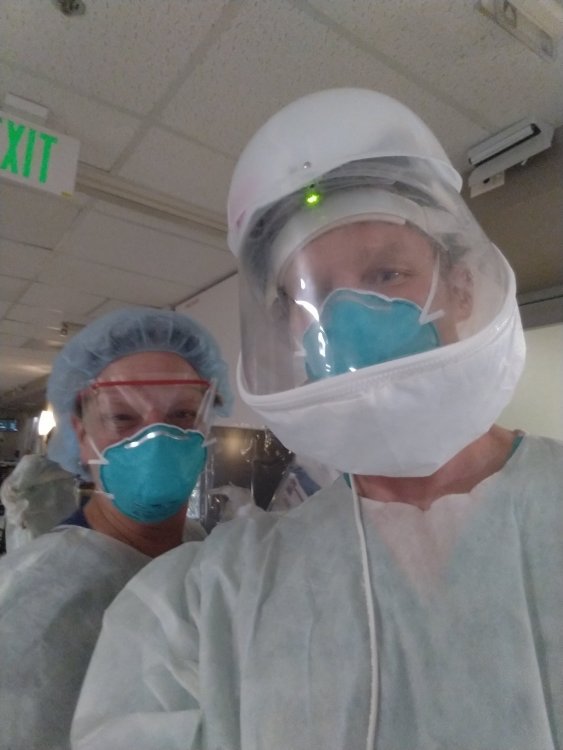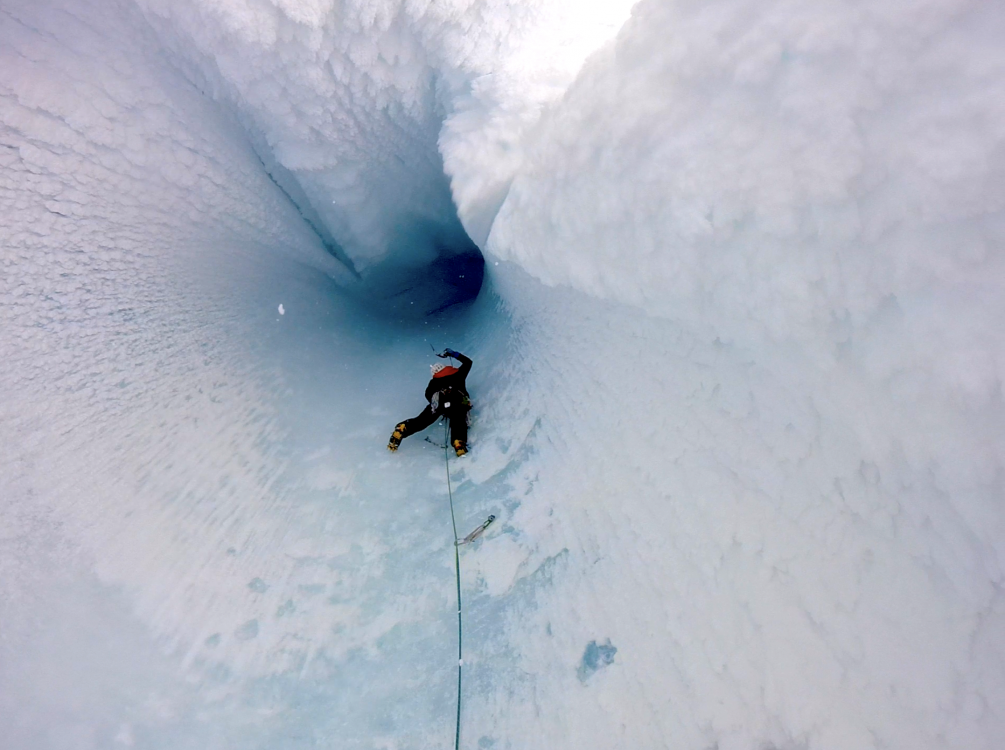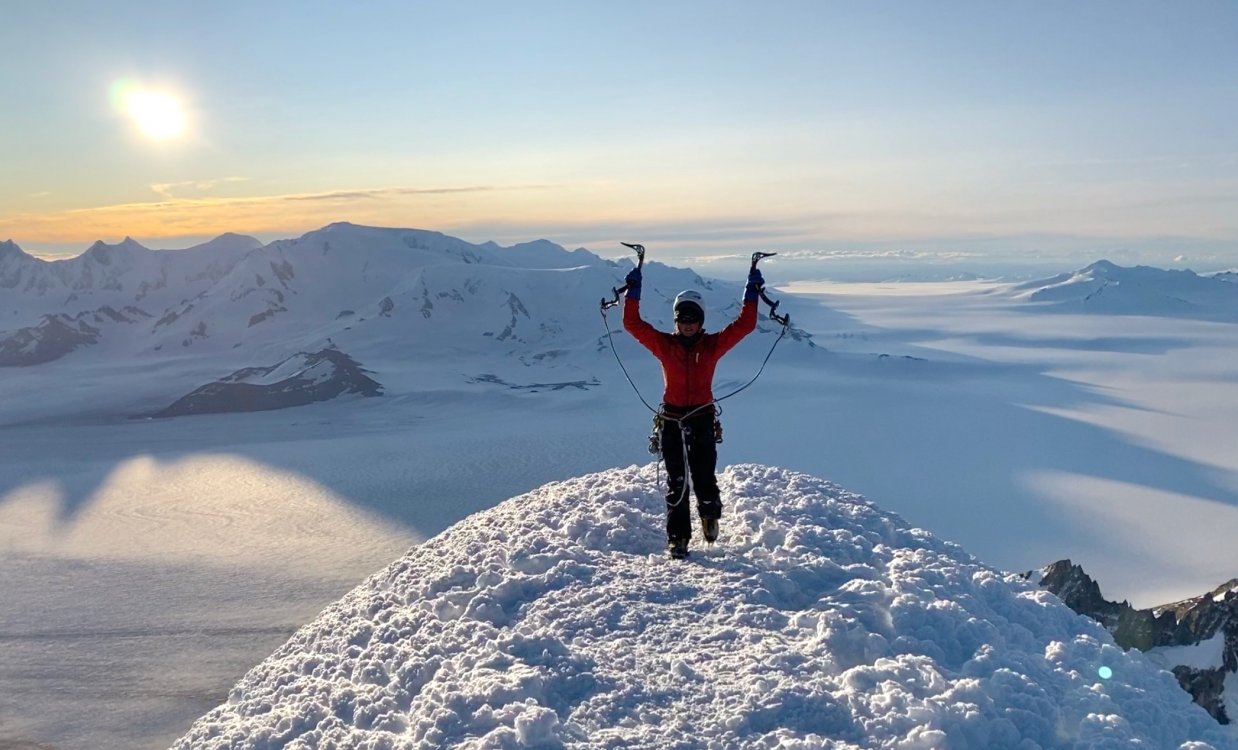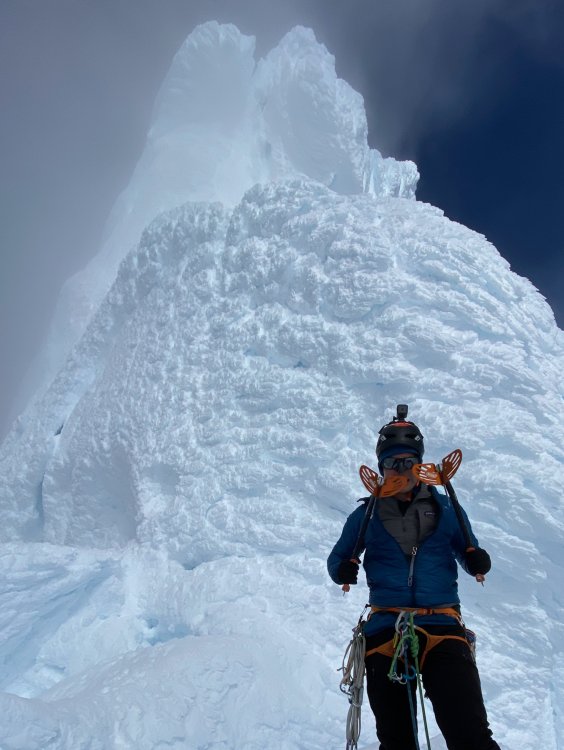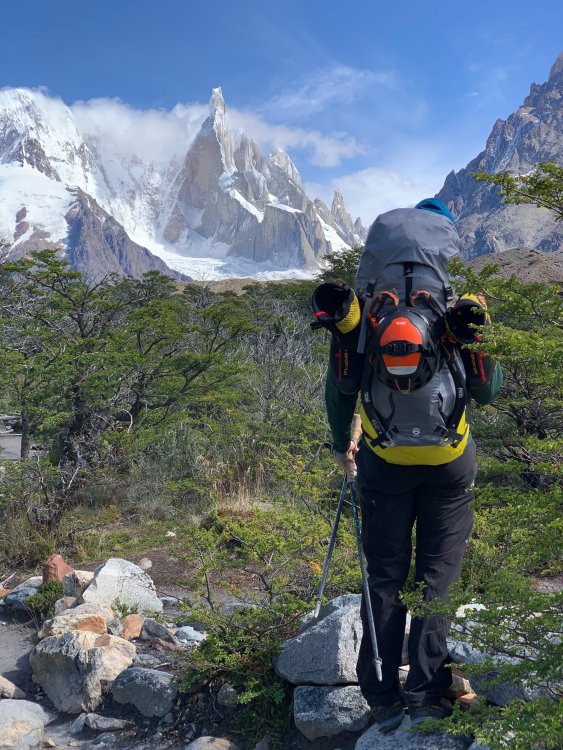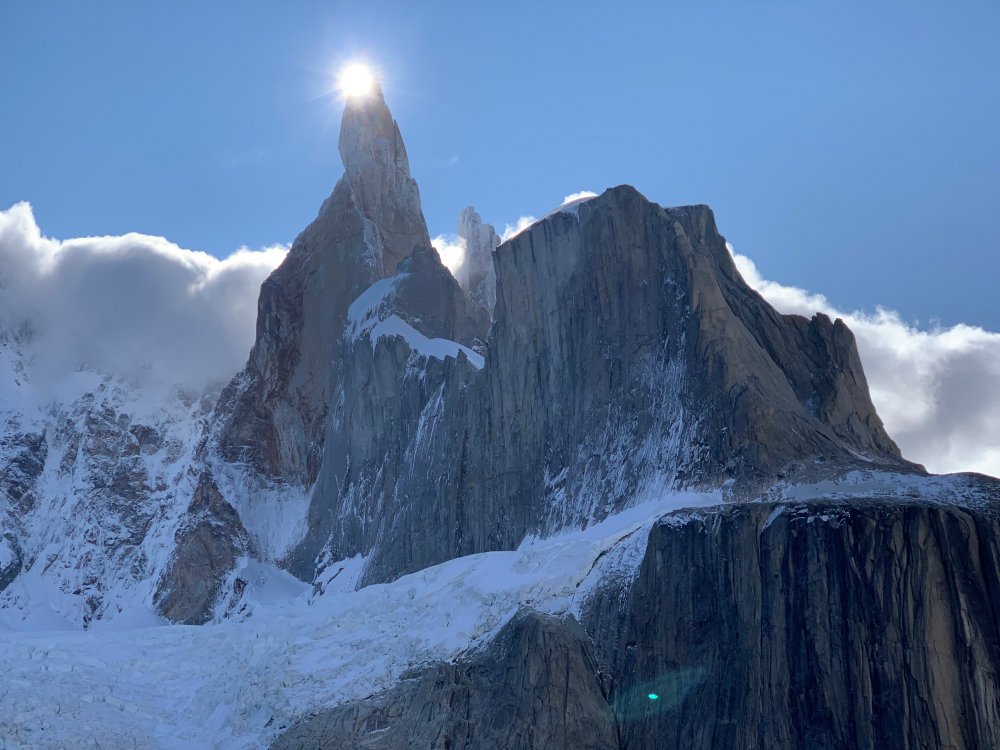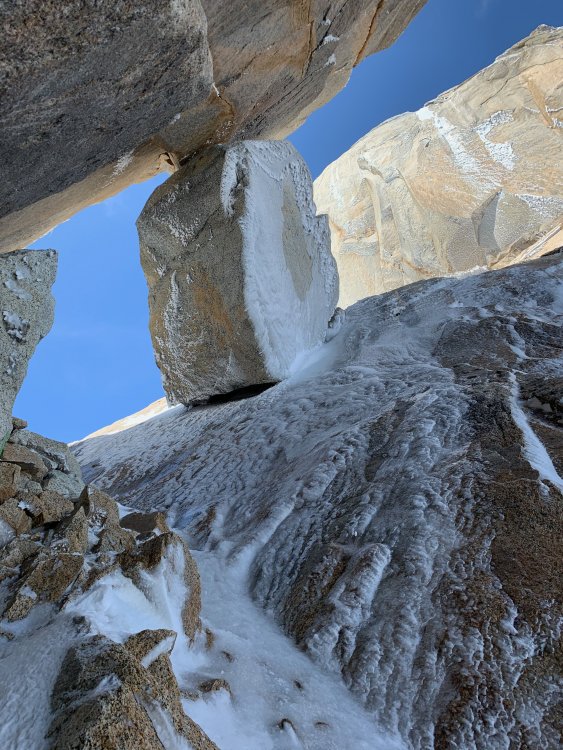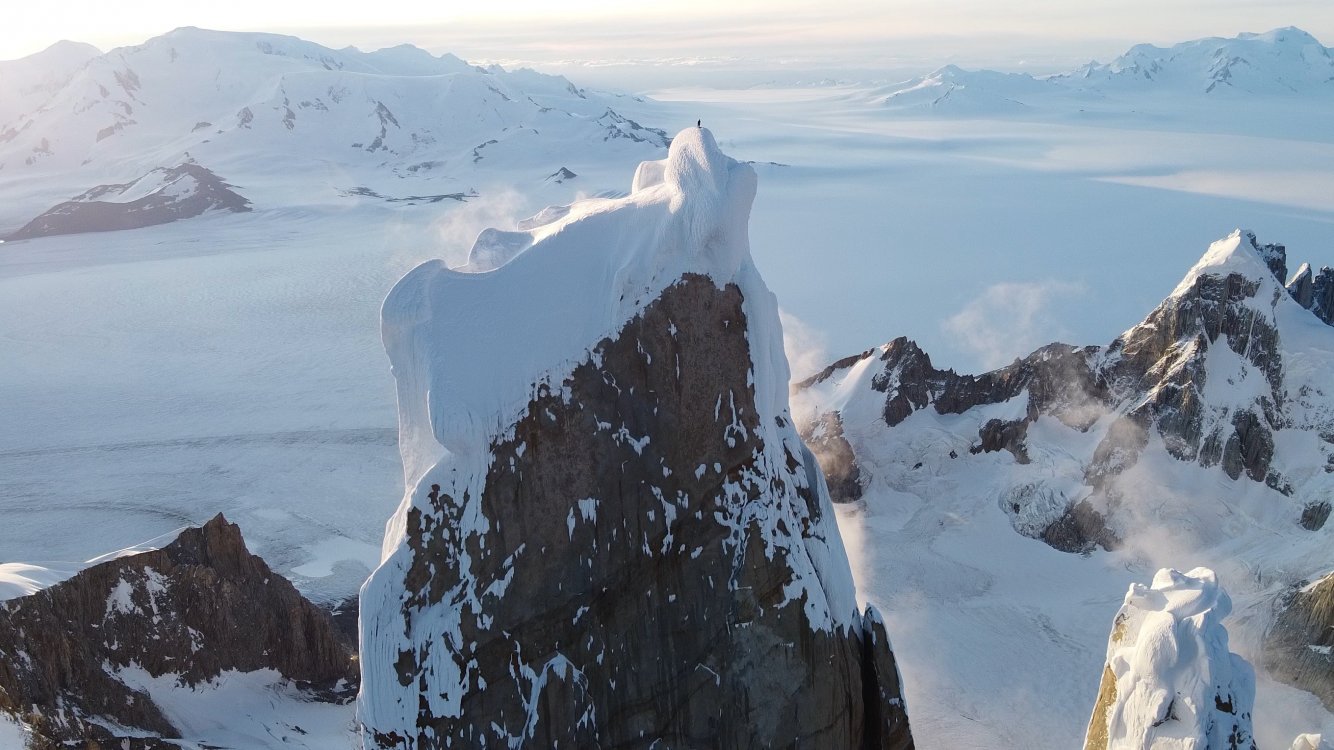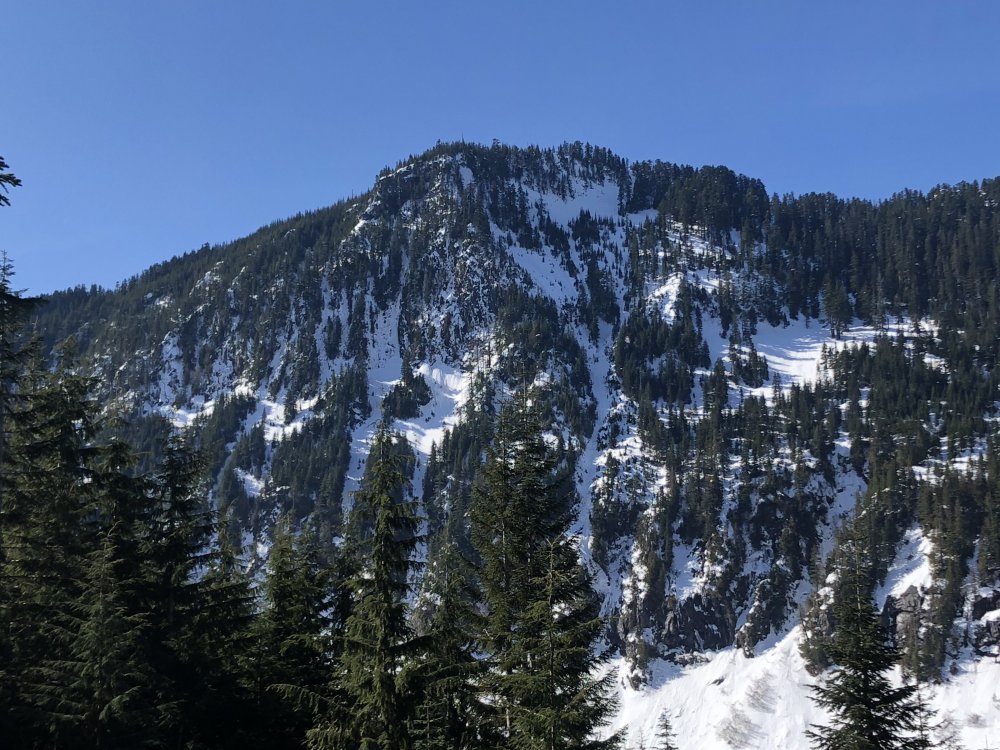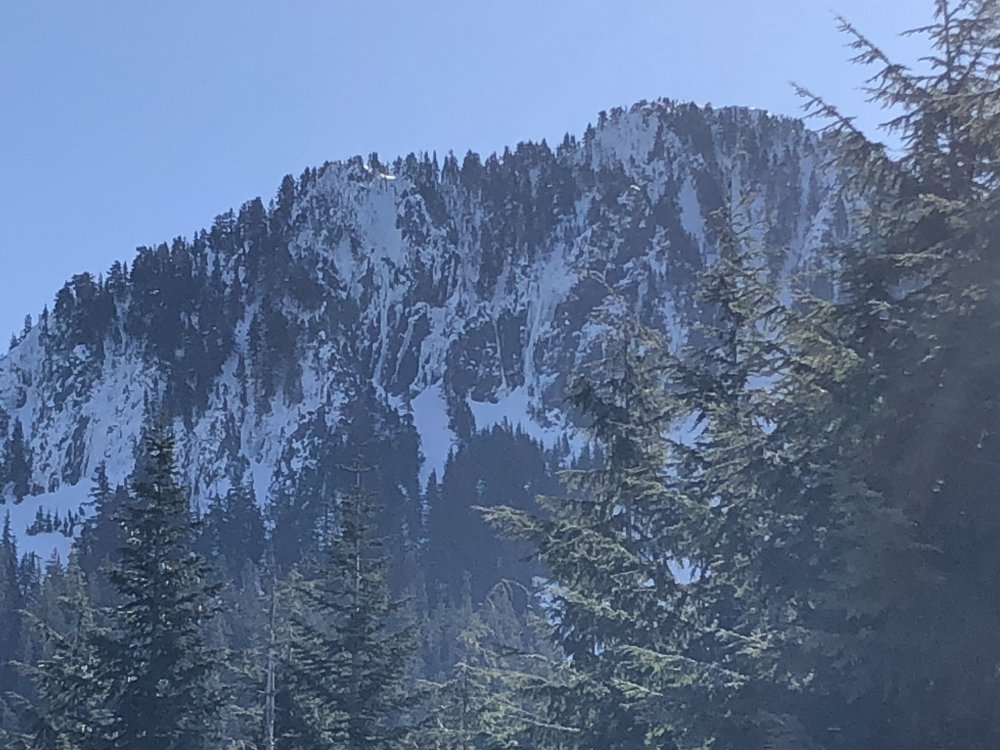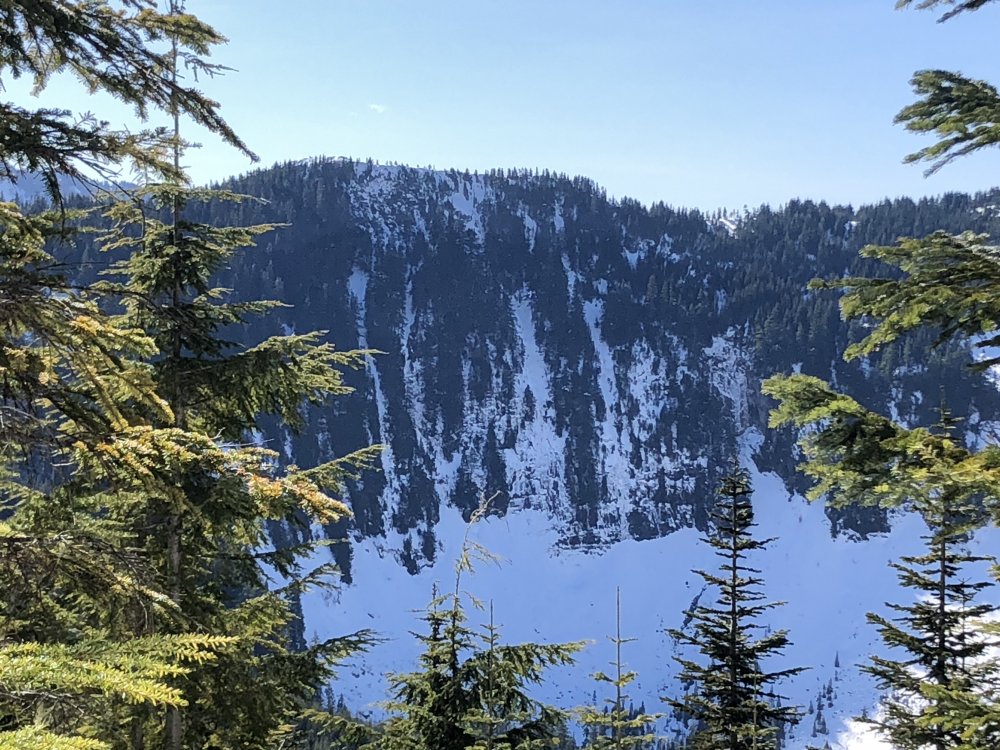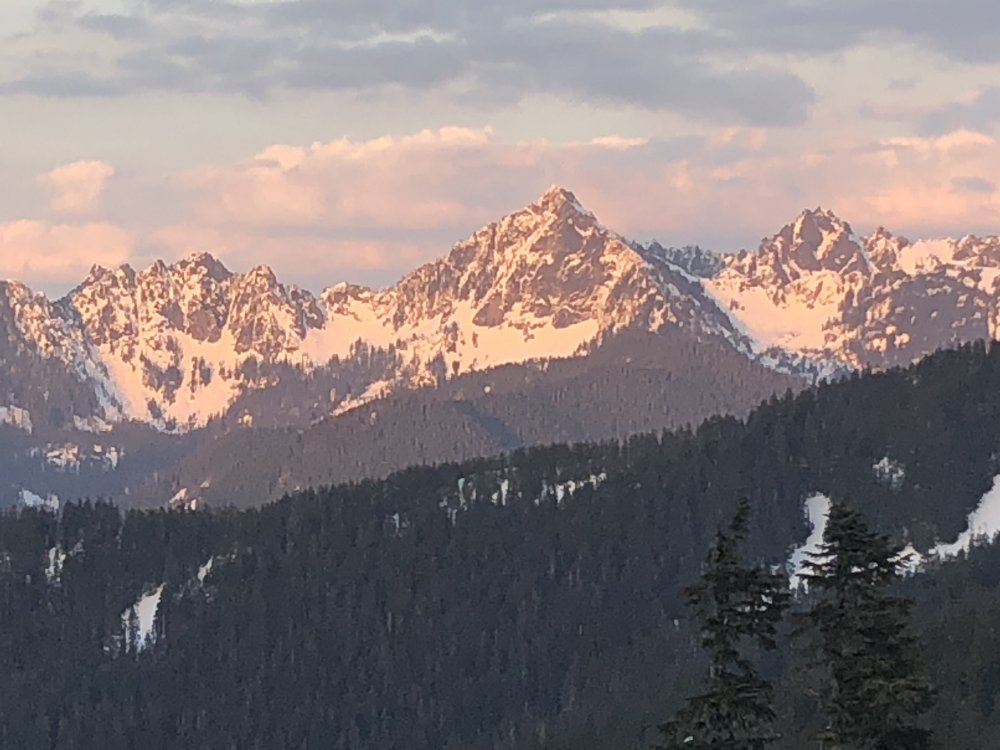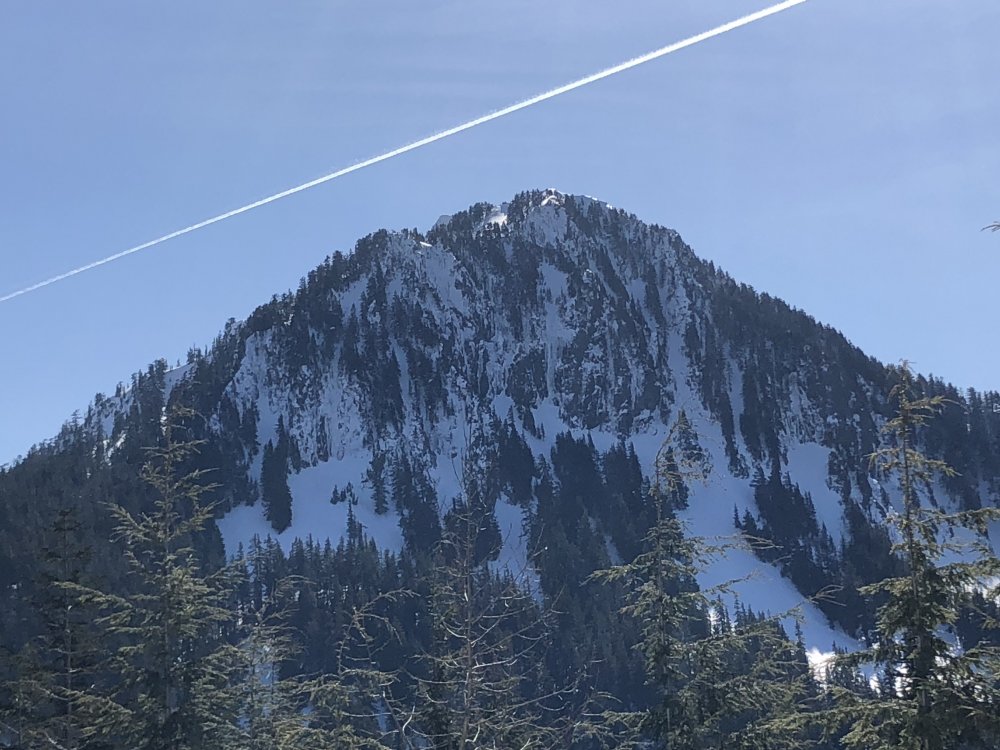Leaderboard
Popular Content
Showing content with the highest reputation on 03/29/20 in all areas
-
There was a good bit of wind that morning on the approach but it stopped when I got to the saddle. I didn't find a breeze on the approach to be significant compared to the rest of my day out. Going down Leuthold I didn't experience any significant icefall. Both of the bollards were solid and I thoroughly inspected them beforehand. I brought a picket and some bags to make deadmans if the bollards were shit. My tracks going to Yocum were there, along with a bunch of other parties. I went to an elementary school in Gresham with a great view of Hood. I have some sick tan lines and a new iPhone if you doubt those too. If you want more details you can message me. I don't lie about my climbs and am as open as I can be. The sunrise that morning was beautiful!6 points
-
2 points
-
Congrats nonbasketless on the dumbest post of COVID-19. May no one surpass it.2 points
-
2 points
-
Trip: Sperry Peak - East Face Gully Attempt Trip Date: 11/29/2019 Trip Report: Sorry I didn't post this for a few months, but basically I was scared of others going up there, turning around and seeing the massive ice flows on Sloan, and poaching our prize. But what's done is done so now I want to share what I learned from an attempt of the East Face Gully of Sperry over Thanksgiving 2019. This trip report (http://www.nwhikers.net/forums/viewtopic.php?t=7980139) caught my attention and Sperry became the focus of my fall alpine efforts. The east face is a beautiful 3000 ft wall with just an hour approach! This gully looked absolutely sweet, like some moderate mixed/snow/ice route. This was the only report I could ever find, so it was hard to know what to expect. Fall 2019 was very dry for us. At elevations below 5000 ft, there was no snow come mid November. Then, right before Thanksgiving, it dumped about a foot down to 3000 ft and got extremely cold (highs in the 30s in the lowlands). Good for ice right? Sperry. Approach slabs on the left. Gully obvious in the middle. Daniel and I drove up to the trailhead and hiked into Wirtz Basin around sunrise. We could immediately tell we were in trouble. The 3rd to 4th class approach slabs looked like they were covered in thin verglass and fresh powder. We started up them, but decided we wouldn't be soloing them (Daniel was pretty new to ice climbing at this point) so we tried going through the dense trees to the right. This was impossible, running into steep cliffs and powder on no base. We bailed back to the slabs. Typical climbing in the approach slabs. We broke out the rope and I led up the right side of the slabs on WI1-2 R where sometimes your crampons would bust through to the rock. It was very insecure, albeit easy. Just not what Hyalite prepares you for. I belayed Daniel off a small bush and then we scrambled up higher. Then to the right there was a little WI3 near vertical step for 20-30 ft that might have taken 6 cm screws. I now realize this was the "little icy step" Jim referred to in his trip report. Damn, those guys were tough. Another veggie belay brought Daniel up. The next section involved climbing atop branches while getting soaked in powder. Then we traversed across more 3rd class slabs covered in fresh powder in crampons. My crampons were brand new and suffered dearly. Finally, we were staring up the gut at the gully, around 4000 ft. It was near noon and the strong sun was causing snow to constantly cascade down the gully. It looked absolutely icy and beautiful! Certainly one of the most beautiful gullies I've ever seen, but we were too late to continue. The powder would have been heinious. We stopped here. But the ice looked so good! Sloan, with the lines already forming. We rapped off trees back down to the valley floor. We took a walk further up Wirtz Basin and admired the incredible geometric features of Sperry. It is truly one of the underrated great mountains of the North Cascades. There were all of these cutting edge mixed ice routes that went 1000 ft up the SE face in the deep chimneys and cuts, but then they just petered out into nothing. There were even some chimneys like hundreds of feet deep and perfectly angular. I could just imagine Colin Haley deep in the darkness, climbing some great new route. I'd love to come back in the summer and climb one of the huge 2000 ft rock routes Beckey mentions that never get climbed anymore. I think the east face gully could be a great summer scramble, 3000 ft of scrambling with basically no approach. This is an incredible mountain. This looks like an incredible route. We'll be back! Inspiring SE side of Sperry. I've seen another mountain like it. Serious ice potential further up the valley. Cool easier ice potential up on Morning Star. Great north face of Sperry. Wonder if that route has seen a repeat? North face Big Four. Lessons learned: * this is a tricky route to nail in proper conditions. If that low snow hadn't fallen, the approach slabs would've been dry (like they were for Jim), but would the gully had been filled in? Probably not this year. We needed more snowfall above 4000 ft. Or if just a bunch of snow falls to 3000 ft and consolidates, but you can still drive to the trailhead, that'd work also. Or just climb this route in mid winter consolidated conditions with a sled access. * The approach slabs are really the only way to go. Don't try to go around. * those old timers are tough mothertruckers. Gear Notes: A few screws, some rock gear. Approach Notes: Short, probably one hour if you can drive to the trailhead. But the slabs can be cruxy...1 point
-
Via dei Ragni: Grade VI, 95deg snow/rime/ice, M4, 1000m Scribe/Photos/Climbers: Jeff and Priti Wright Google Street View: Cerro Torre Summit 360 Panorama https://youtu.be/nZ4O199GfAo?si=Kr-etK2F4MSCGxVn https://youtu.be/RNNtXFuI_RQ?si=DDMqTiOcCEcDAJGP https://youtu.be/iRWR_DQoL3A?si=ebEbe75BW4pbSuKz We’ve had a picture of Cerro Torre on our desktops, phone wallpapers, and posters above our bed for the past 5 years. It was the reason we took up ice climbing in the first place. In February 2016, we made our first attempt on this route, hoping to at least get a glimpse of the scale of the mountain and understand what it took to climb it. The weather was too hot by then for the climb, and after three days, our high point was below the hard technical climbing. Previous trip report: The road to El Chaltén The Fitz Roy Massif These past two months were our fourth (and longest) climbing trip to the Chaltén Massif, and sixth year of watching the Patagonian weather patterns. We wanted to return to attempt Cerro Torre again, but the next two seasons were not possible because of bad weather. Last year, at the beginning of February, we saw a fantastic weather window, and the stars aligned. We flew down to Patagonia in a 9-day magical whirlwind of constant movement, and summited Fitz Roy via the Franco-Argentina route. While on the summit of Fitz Roy, looking down at the surreal summits of the Torre, we were determined more than ever to come back the following season. Day 1. We arrived in El Chaltén on New Years Eve, the last day of a 4-day weather window (brecha)…we missed it! Since then, January was filled with short stints (8-12hrs) of good weather in the mountains, and the arrival of a 6-day mega window in early February sent an electric buzz throughout town. We were a couple of bats out of hell with our 40lbs packs each as we set towards Laguna Torre. The plan was to pass through the Niponino base camp in the Torre Valley and bivouac at the higher Noruegos (Norwegian) bivouac, which would put us closer to Col Standhardt (the next day’s objective)…the passageway to the West Face of Cerro Torre where the Via dei Ragni route begins. Our bivy site at Noruegos Day 2. From the Noruegos bivy site high on the slopes of the Torre Valley, we traversed near the base of the Torres, under the celebrated SE Ridge (perhaps the greatest climb in the world) and also the 1959 Maestri line to the triangular snowfield where so much history and controversy took place. From the East, all of the Torres stand impossibly steep and impassable. To get to the Ragni route on the West side, we would climb up and over the Col Standhardt where an implausible car-sized chockstone sits interminably between the col’s steep walls. From the col, one gets the first glimpse of the Southern Patagonian Ice Cap (Hielo Continental), a massive expanse of ice 200mi long. On a rare, clear day such as this day, we could see green Chilean fjords across the Ice Cap between large, snowy volcanos. A Lighthouse Several rappels deposited us down to the Circo de los Altares (Cirque of the Alters), an impressive crescent of white-capped peaks and toothed spires. From there we headed up another glacial ramp on Cerro Torre’s West Face to a high camp, 150m below the Col de la Esperanza (Col of Hope), first reached by Walter Bonatti in 1958 who hoped that this col would one day blaze a path to the summit. It wasn’t until 1974 that a team of Italians from the Ragni di Lecco (thus the name “Via dei Ragni”) completed Bonatti’s vision. Circo de los Altares Steep snow climbing and easy mixed terrain led us towards the camp at Col de la Esperanza, the camp we hadn’t reached on our last attempt. As we hiked past our previous high point, our hearts soared. This time around, the climbing felt much easier with 4 more years of climbing experience under our belts. Day 3. This day was a rest day of sorts. To set ourselves up for success on summit day, we were moving to the highest camp a few hundred meters up: El Elmo (“Helmet”), a prominent plateau below the steep, technical climbing. Those who were faster and stronger than us had gone straight to the highest camp the day before and were now going to do the hard work of battle-axing the bullet-hard blue ice and cleaning the cotton candy mushrooms of the summit. As we came over the Col of Hope, we entered an otherworldly expanse of mangled rime towers and precarious exposure. These deformed blobs of ice towers with icicle branches and feathery leaves seem like something only God or Dr. Seuss could conjure. It’s something so beautiful and terrifying at the same time. We were face to face, looking up at thisbeastly Tower. A spectacular nightmare. Day 4. Summit Day! We were pretty antsy to get going on the summit push. Falling snow greeted us when our alarms went off at 2:00AM as the mountain was enveloped in a cloud. All over camp, alarms went off and were snoozed as the precipitation discouraged movement. When the stars finally came out again, we were the first to muster our strength and get to work. Walking up to the base of El Elmo in the darkness, the first overhanging rime ice mushroom of the route, we gave a sigh “ah, breakfast!” The last 10m didn’t actually have any good protection (besides maybe a horizontal picket), and it was a sequence of cutting the feet loose, campus’ing from questionable tools, and shoving knees into the soft rime to make upward progress. Once at the top of El Elmo, a crowd had formed at the base, chomping at the bit. All of camp was finally up. The snooze button had proved an epic failure of our collective, strategically staggered alarms. We all watched in awe and gave whooping shouts from this low perch as our friend, Fabi Buhl, paraglided from the summit in the wee hours of the morning, slowly swirling in front of the spectacular sunrise over Lago Viedma. He was the first ever to fly off the summit of Cerro Torre having climbed the mountain first (and not dropped off via helicopter). After El Elmo, the mixed pitches zig-zag through a maze of rock and ice up to the base of The Headwall. Two pitches of blue, overhanging, bullet-hard ice. The final pitches mount three tiers of giant rime mushrooms facing the Ice Cap. This high ridge gets pummeled by the wet, freezing storms that race around the Southern Ocean to create these crazy rime formations. The first and second rime mushrooms had formed spectacular, natural blue-ice tunnels created by vortices of wind spiraling up the ridge, clearing a path through the thick outer layer of soft rime ice. Climbing into this vertical subway tunnel for 60 meters felt like entering a portal into another world. It eventually funneled up to an elevator shaft and spat us out of a squeeze tube. For the second and third mushrooms, we attached Petzl prototype “wings” to our ice tools to make purchase in the soft, overhanging, cotton-candy rime. These wings are horizontal plates that bolt onto the picks of our ice tools like Dilophosaurus gills. The Final (Summit) Mushroom was a beast. The previous day, it had taken the other parties many hours to clear a natural half-pipe, then dig a tunnel through the steepest part for many hours. Their line then exited their manufactured tunnel out onto the overhanging summit lip. Walking up to the steepest point on Cerro Torre on a perfectly still, clear day was absolutely surreal, basking in the bright orange-red glow of the sunset. The 200 miles of the Continental Ice Cap stretched before us and the Pacific Ocean now clearly visible. Behind, on the other side of the Torre Valley, small, wispy clouds hovered over the summit of Fitz Roy. We were lucky to get perfect lighting to fly our drone around for 30 minutes alone before we headed back down to our tents at El Elmo for the night. Days 5 and 6. To get back to town, you can reverse your way up Col Standhardt (M7 shenanigans), or take one of two trekking passes along the Ice Cap. We had experience taking the Northern pass (Paso Marconi) which was now in really bad shape. We opted for the Southern pass (Paso del Viento) to try something new, and hopefully be able to turn our brains off for a few days (sadly, this was not the case). The Hielo Continental spans 50mi across and crawls 200mi north to south across Southern Patagonia. It looked so beautiful and serene from our climb. Now, face to face with this beastly crocodile, it was the stuff of horrors. Canyons after canyons of impassable crevasses, we zig-zagged our way in no logical direction under a bright, unhelpful, full moon. From the air, our tracks must have looked like the random scribbling of a toddler on a massive, blank white floor. A sun dog greeting us after our descent. Finally reaching the pass and seeing people again after such a mental test of sanity was nothing short of jubilant. A popular trek is to take the pass South to Lago Viedma: the Huemul Circuit. We were now on a delightful trekking path and could now…finally… turn our brains off and just put one foot in front of the other for a mere 14 miles back to ice cream and showers and safety. Thanks: We had good confidence in the forecast and the length of the window, but it’s still important to have daily weather updates to anticipate the inconsistencies between each day. We’re so grateful for our weathermen who sent us updates to the inReach and gave us both confidence and peace of mind each day that we spun ourselves further from civilization: Dan Berdel, Devin Monas, and Rolando Garibotti. We’d also like to thank Dave Burdick (Alpine Dave!) for his support, inspiration and beta on the route. Also thanks to the American Alpine Club Live Your Dream Grant for supporting this trip. Recommended Reading: The Tower, Kelly Cordes Patagonia Vertical, Rolando Garibotti Enduring Patagonia, Greg Crouch Gear Notes: 13 ice screws (including 3 stubbies) 1 Picket (to place horizontally in vertical rime!) small set of nuts (Wildcountry Superlight) small rack of cams (Black Diamond Ultralight cams .4-1, Metolius Mastercam 1-3) 2 Petzl Nomic Ice Tools + Petzl prototype wings (rented from Viento Oeste gear shop in town) Petzl V-link Umbilicals 2 stuff sacks (gear management in pack, and also to leave for snow anchors) The North Face Phantom 50 backpack 4 double-length Petzl Pur'anneau runners with 2 Camp 22 biners each 2 double-length Petzl Pur'anneau runners with 1 Camp 22 biner each 7 single-length Petzl Pur'anneau runners with 1 Camp 22 biner each (can’t have too many runners) Patagonia R2 Jacket Patagonia Micro Puff jacket Patagonia Macro Puff jacket Patagonia Kniferidge hardshell jacket (didn't use)...also, it's now the "Ascensionist Jacket". Mainly wore the Micro Puff for outer layer Patagonia Nano Air Pants Patagonia Softshell pants (bibs) Patagonia base layer (top+bottom) Platypus 2L soft bottle Garmin inReach Mini (love this little guy!) Petzl Dart Crampons 2x Mammut Twighlight Twin Rope (7.5mm) Petzl Sirocco helmets Petzl Sitta harness (for him) and Arc’teryx harness (for her) Metolius Feather Nut Tool (each) Mammut Smart belay device (not the Alpine Smart) 3 lockers for group: Grivel Tau K12L, Grivel Lambda HMS, Grivel Plume 2 medium fuel canisters Jetboil Sol stove Safety ‘biner (each) – Edelrid 19g caribeener, Petzl Micro Traxion, short Sterling Hollowblock, Trango Piranha knife Bivy setup – Full Length Thermarest NeoAir XTherm sleeping pad, Exped Air Pillow UL, Feathered Friends Spoonbill sleeping bag MSR Advance Pro 2 Tent (amazing!) La Sportiva TX4 Approach shoes La Sportiva G2SM boots Petzl Reactik headlamps (each) + 3 extra AAA batteries + Petzl e+LITE headlamp Other things: 1 long spoon to share, chapstick to share, small Joshua Tree sun stick to share, Frog's Tung phone leash, lighter, whistle, duct tape, Thermarest repair patches, Voke tabs, Nuun, pain killers, 1L Platypus soft water bottle (for her) and 750mL HydraPak Stash (for him), warm headband, glove liners, 1 pair thick long socks (each), sunglasses, ear plugs, WRFA emergency form, small pencil, cotton handkerchief, wad of toilet paper, ID, Credit Card 1 Swix alpine pole (with snow basket) Arcteryx ball cap Adidas Sunglasses (with nose sun guard), no longer available iPhone 11 Pro (with route beta downloaded) GoPro HERO 5 Session (with helmet mount) DJI Mavic Mini Drone (remote and drone stored in USPS Tyvek bag) Dinner: 2 AlpineAire meals, 3 Near East Couscous boxes repackaged with small olive oil packets in ziplock bags, salt Day food was mostly bulky, yummy snacks: vegan jerky, dried mango, nuts, Cheese-Its, sesame sticks, Gu, nut butter, etc Approach Notes: Approached via Col Standhardt. Also possible to approach via Paso Marconi (currently in difficult/sketchy conditions) or Paso del Viento (long). We came back via Paso del Viento, but it's also possible to climb back over Col Standhardt (M7 shenanigans with old fixed ropes here and there).1 point
-
I'm always impressed by your creations @kmfoerster. So cool! Maybe a 50L version for people who carry too much camera gear?1 point
-
This reminds me of when crazypolishbob/glassgowkiss refuted Colin Haley and Mark Bunker's winter ascent of the Upper NR Stuart because he was there and did not see any tracks. There was another fellow who refuted Colin's report of soloing the NF Robson in a day and a half. I certainly believe lando's claim. Having had my own go around with the Yocum Ridge I can say with some authority that it is not technically difficult, just really scary and dangerous. I'm sure lando is perfectly capable of climbing the rig. Why would someone lie about climbing a route that maybe 10 other people in the world care about anyway? I feel that in this game you really have nothing to gain by making false claims, especially a route on Mt. Hood.1 point
-
No conjecture is needed guys, I was on the route a few weeks ago, and vast majority of the high risk climbing could be protected with a rope. Anyway, that's not the point, we don't need to argue about a route that most people in this thread have never seen up close. I'm simply saying that there are a lot of strong young guys making bold climbs, and I'm worried about them. Hardly seems controversial...1 point
-
Wandering the hills last week I found what looks like a couple of good walls with what looks like ice and steep snow reminiscent of the North facing walls of Kent and Abiel Peaks. I have given up on being an ice climber but compulsively still look for lines. All photos were taken during this past week of warm sunny weather yet many faces still held ice. The first 3 photos are above the granite lakes on the backside of Mailbox peak. the 4th pic is of the West Face of Kaleetan Peak. That right leaning ramp looks promising. the 5th pic is of the NW shoulder of Web Mountain (a sub mountain between Mt Defiance and Dirty Harry’s peak. this one seems most intriguing because the Web Mountain trail from the Farside parking lot of Exit 38 seems to take you most of the way there from I-90.1 point
-
Sounds like an amazing adventure. I'm not one to tell you what to do or not to do. As Jimi Hendrix said, "I'm the one that's going to have to die when it's time for me to die, so let me live my own life the way I want to" (If 6 was 9). Risk is an essential part of climbing for many of us, and we all have to find the level that suits us best. However, with maturity most of us come to realize that the pain our death or disability would inflict on our families, friends, partners, and communities is greater than we would experience ourselves. Read this thoughtful piece from Colin Haley, a local legend who did a lot of soloing in his younger years.... https://www.colinhaley.com/a-brief-visit-to-patagonia-and-reflections-on-hard-solo-climbing/1 point


